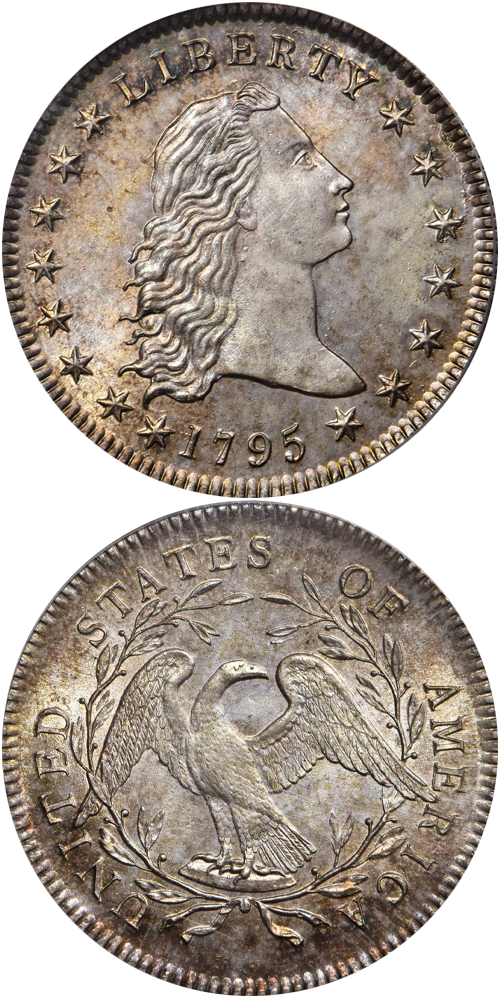1795 Flowing Hair Dollar
2 Leaves
Robert Scot was appointed engraver at the United States Mint in November 1793 and was employed in that position until his death in 1823. Scot was responsible for engraving master dies, which he called "original dies," and the central device punches or hubs that were raised from them. He also had a hand in producing the working dies that were used for coining, though some of that work was delegated to assistants like John Smith Gardner. Though modern writers have attributed several designs of this era to Gardner, he likely accomplished the day-to-day grunt work in the engraving department, executing a wide range of working dies, called "coining dies" by Scot, rather than performing the creative work that has been credited to him.
Scot's written testimony to Congress, offered early in 1795 to answer questions about the workload of the engraving department, has been cited by authors including Don Taxay and Robert Hilt, though Bill Nyberg was the first to actually publish it (John Reich Journal, August 2012). Scot's testimony reveals that the time to engrave an obverse master die for a 1795 dollar, consisting of the Liberty head design, took "six or eight days" and a reverse master die took "nearly the same time." "After their Hubbs are compleated," Scot wrote, "a head Die for striking money may be finished in two days," assuming that the brittle steel of the die did not crack during the hardening process.
The master dies created hubs, which were then used to produce working dies. Reverses required two master dies, with the eagle device on one hub or punch, the wreath on another. Today, 1795 dollars are neatly divided into two groups based upon which wreath hub was used, one showing two leaves under each wing, the other showing three leaves. Two different eagle hubs were used as well. This variety shows the same eagle and wreath used on the 1794 dollars, produced using hubs first made for the 1794 coinage. This may be among the reasons M.H. Bolender called this variety Bolender-1, though the emission sequence for 1795 dollars has never been entirely settled.
The example to the left was sold by Stack's Bowers Galleries in the Larry H. Miller Collection, where it realized $576,000.






